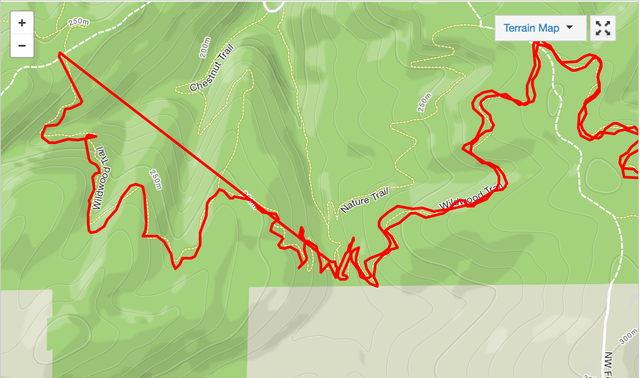A year ago, when I switched from training for a 50K trail run to training to bike 100+ miles for Reach the Beach, I finally downloaded the Strava app for my iPhone. At the periphery of my knowledge, I knew the app existed and that multiple professional athletes used it to publicly share their training, but for a long time it seemed a bit more serious than I was willing to be, just like my training log.
Curiosity got the better of me though and I wondered how fast I was flying down some of those hills in the West Hills or in the Columbia Gorge. And yes, I craved a bit of bragging rights too. My profile is located here. As you can see my usage is a bit sporadic. Entire months and multiple weeks have no data, despite them being in the middle of prime running or biking season. What can I say, I am inconsistent. While I love my phone, I have a tendency to ignore it as a computer device as it seems silly to be so consistently connected to the world when you are Outside™. More than a few rides have ended and I discovered much to my chagrin that I had not started Strava at all. One of those fancy GPS-enabled watches would likely help, but I have not bit that bullet yet.
As far as the data Strava provides post-run or post-ride, it is quite a bit of fun to see what my average speed is, the elevation gained, and what my mile times are for various sections of my run or ride. Just recently, during a downhill section on Newberry Rd., I apparently hit a maximum speed of 51.7mi/h. And during a trail run this past week, I was running half my miles at 8 minutes or under. That is pretty darn fast on both accounts. I am a tiny bit impressed with myself. It makes me think that this more structured approached to training is providing real results. That is a positive feeling.
However. The data is not entirely reliable. My trail running takes place primarily in Forest Park where there is a copious amount of trees and more than a few ravines, which regularly interrupt GPS or lessen its accuracy. The trail run I did this past week is a whopper of an example.

As you can see the route Strava thinks I followed deviates a non-trivial amount from the actual trail. Then, you can see in the upper left that it seems to draw a line straight across the map to another point. Seems Strava completely lost signal for about 20 minutes and did not track any of my running past that last point in the upper left. Did not regain signal until I was almost a mile back. I think this is the second or third time such a huge "break" has occurred on a trail run. Biking is typically much better with its data, since it is on a road with a clearer signal from the GPS. Still, I have definitely seen a few cases where because of speed or conditions, a jump or two has happened during a turn or in a valley.
Strava also has what it calls a Grade Adjusted Pace (GAP) speed, which they describe as an estimate of what your pace would have been if you had been running on flat land, opposed to a grade. I am sure there is some solid research and math behind their calculations, but for my first mile last Wednesday I ran a 7:25 pace. Strava informed me that my GAP pace would have been 5:55. Um, I think not. Pretty sure you could put me on a flat mile with a decent tail wind and I would not even come close to a sub-6 minute mile. It's a fun thought but I am certainly not taking that GAP pace seriously anytime soon.
Finally, Strava has "segments" where you can compare yourself against other athletes who have done a similar route and your own past rides. Stirs up one's competitive side, which is not a bad thing. Most of the time I fall pretty square in the top 10-12% percentile of people who use Strava. Every so often I take a look at the top athletes for a segment and notice oddities. For a segment I did during yesterday's ride, most of the top 10% people were doing a 22-25mph pace. The top athlete though? 43mph. Hm. I may be wrong but I have serious doubts that pace is accurate.
These segments also do not take into account conditions either, so you have to be mindful that your pace for a segment done in winter while running 15 miles will definitely be slower than an athlete who did that segment in summer while only running 6 miles. Is it really that important? No, not really. But, if the data and statistics are there, you should understand their faults and adjust your expectations accordingly.
Overall, I enjoy Strava because I can regularly evaluate my baseline and progress during my training. I am definitely getting faster overall. Yet, on days when I feel tired, my pace definitely suffers. When I do 2 or 3 moderate to hard days in a row, the final day is usually the slowest in whatever activity I am doing. Not always though, which forces me to acknowledge the strong effect that rest, hydration, and nutrition have on my performance. Strava validates the power of data in training. Further, it is planting the idea firmly in my noggin' that if I wish to strive for even more performance I need to seriously consider tracking more data, such as heart rate and caloric intake pre, during, and post exercise.